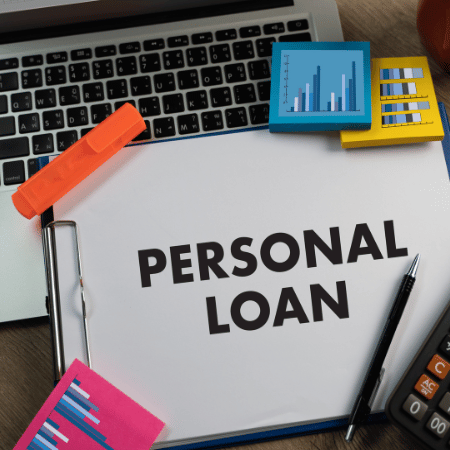Personal loans are an excellent option for covering unexpected expenses, consolidating debt, or financing large purchases. With flexible repayment terms and no requirement for collateral, personal loans offer a convenient way to borrow money. However, understanding how to claim a personal loan is crucial for a smooth application process and approval.
This guide will explain how to claim a personal loan, covering eligibility criteria, required documents, and the step-by-step application process.
Table of Contents
- What is a personal loan?
- Eligibility Criteria for Personal Loans
- Documents Required to Claim a Personal Loan
- Steps to Claim a Personal Loan
- Research and Compare Lenders
- Check Eligibility
- Submit Application
- Verification and Approval
- Disbursement of Loan
Types of Personal Loans
- Important Factors to Consider
- FAQs
1. What is a personal loan?
A personal loan is an unsecured loan provided by banks and financial institutions for various personal needs, such as medical emergencies, travel, home renovations, or weddings. Since personal loans do not require collateral, they usually have higher interest rates than secured loans. The repayment period for personal loans typically ranges from 1 to 5 years, depending on the lender and the borrower’s credit profile.
2. Eligibility Criteria for Personal Loans
Before applying for a personal loan, it’s essential to understand the basic eligibility criteria that lenders consider:
- Age: Most lenders require borrowers to be between 21 and 60 years of age.
- Employment: Applicants must have a stable source of income, either from employment or a business.
- Income: Lenders usually require a minimum income threshold, which can vary depending on the lender and location.
- Credit Score: A good credit score (usually above 700) is important to get loan approval and better interest rates.
- Residency: The applicant must be a resident of the country where the loan is being applied for.
- Work Experience: For salaried employees, most lenders require at least 1-2 years of work experience. For self-employed individuals, a business vintage of 2-3 years may be necessary.
3. Documents Required to Claim a Personal Loan
To ensure your loan application is processed smoothly, have the following documents ready:
| Document | Purpose |
|---|---|
| Identity Proof | Aadhar Card, Passport, Voter ID |
| Address Proof | Utility Bills, Rental Agreement |
| Income Proof | Salary Slips (for salaried), ITR (for self-employed) |
| Bank Statements | Last 3 to 6 months of bank transactions |
| Employment Proof | Employment letter or business proof |
| Photographs | Passport-sized photos |
Make sure to have originals and photocopies of the required documents to avoid delays in processing your application.
4. Steps to Claim a Personal Loan
Step 1: Research and Compare Lenders
Before applying for a personal loan, research various lenders, including banks, credit unions, and online lenders. Compare factors such as:
- Interest rates
- Loan tenure
- Processing fees
- Prepayment and foreclosure options
Tip: Use online loan comparison platforms to quickly compare loan offers from multiple lenders.
Step 2: Check Eligibility
Each lender has specific eligibility criteria. Before applying, ensure you meet the minimum eligibility requirements, such as age, income, and credit score. Many lenders have online eligibility calculators that can help you determine your chances of approval.
Step 3: Submit Application
Once you have selected a lender, fill out the loan application form. You can apply either online or by visiting the bank branch. Make sure to provide accurate information about:
- Personal details (name, address, etc.)
- Employment details
- Loan amount and purpose
Step 4: Verification and Approval
After submitting your application, the lender will verify the information provided. This process includes checking your credit score, income stability, and loan repayment capacity. During the verification process, the lender may contact your employer or request additional documents.
Step 5: Disbursement of Loan
If your loan is approved, the lender will send you a loan offer letter. Review the terms carefully, including interest rates, EMI options, and tenure. Upon accepting the offer, the loan amount will be credited directly to your bank account, typically within 24-48 hours, depending on the lender.
5. Types of Personal Loans
1. Debt Consolidation Loans
Used to consolidate multiple debts into a single loan with a lower interest rate or more manageable EMI payments.
2. Wedding Loans
Finances expenses related to wedding arrangements, including venue, decorations, and other associated costs.
3. Medical Loans
Covers medical emergencies or planned treatments that are not covered by insurance.
4. Travel Loans
Provides funds for vacations or travel plans, including flight tickets, hotel stays, and sightseeing expenses.
5. Home Renovation Loans
Helps finance home improvements, repairs, or renovations without requiring collateral.
6. Important Factors to Consider Before Claiming a Personal Loan
1. Interest Rates:
- Compare interest rates from different lenders to get the best deal.
- Personal loans can have either fixed or variable interest rates.
2. Loan Tenure:
- Choose a repayment period that suits your financial situation.
- Longer tenures reduce monthly EMIs but increase overall interest paid, while shorter tenures reduce interest but increase EMI amounts.
3. Processing Fees:
- Lenders often charge processing fees, typically ranging from 1% to 3% of the loan amount.
- These fees are usually deducted from the disbursed loan amount, so factor them into your financial planning.
4. Prepayment and Foreclosure Charges:
- Check whether the lender allows prepayment or foreclosure of the loan and whether any charges apply.
- Some lenders allow partial or full repayment before the end of the loan tenure, often with a small penalty.
5. Loan Amount:
- Borrow only what you need, even if you qualify for a higher loan amount.
- Consider your ability to repay the loan without causing strain on your finances.
7. FAQs
Q1: Can I get a personal loan with a low credit score?
A: While it is possible, a low credit score may result in higher interest rates or rejection. It’s advisable to improve your credit score before applying to increase your chances of approval and secure better terms.
Q2: How long does it take to get a personal loan approved?
A: The approval process typically takes anywhere from a few hours to a couple of days, depending on the lender. Online lenders may offer faster approval than traditional banks.
Q3: Can I use a personal loan for business purposes?
A: Yes, personal loans can be used for any purpose, including business needs. However, if you need a larger loan specifically for business, it’s worth considering a business loan instead.
Q4: Is there a limit to how many personal loans I can have at once?
A: There is no set limit, but lenders will assess your ability to repay based on your existing debt and income. Taking on too many loans at once may negatively impact your credit score and loan approval chances.
Q5: Can I repay a personal loan early?
A: Yes, most lenders allow early repayment or prepayment, but some may charge a prepayment penalty. Check the loan terms before applying.
Wait 30 seconds for the next page.

